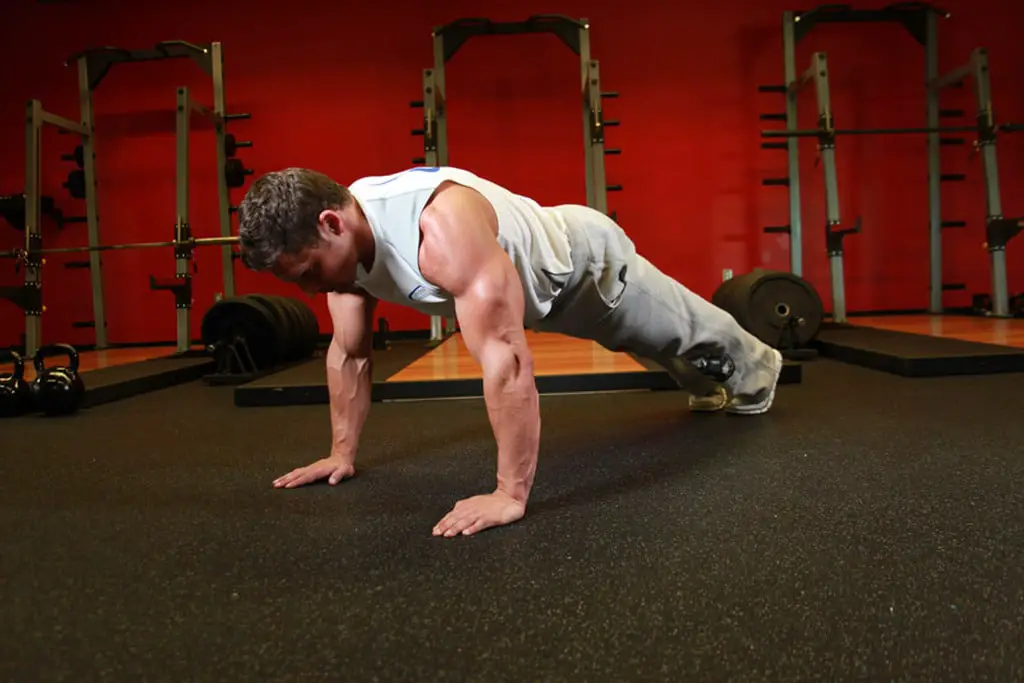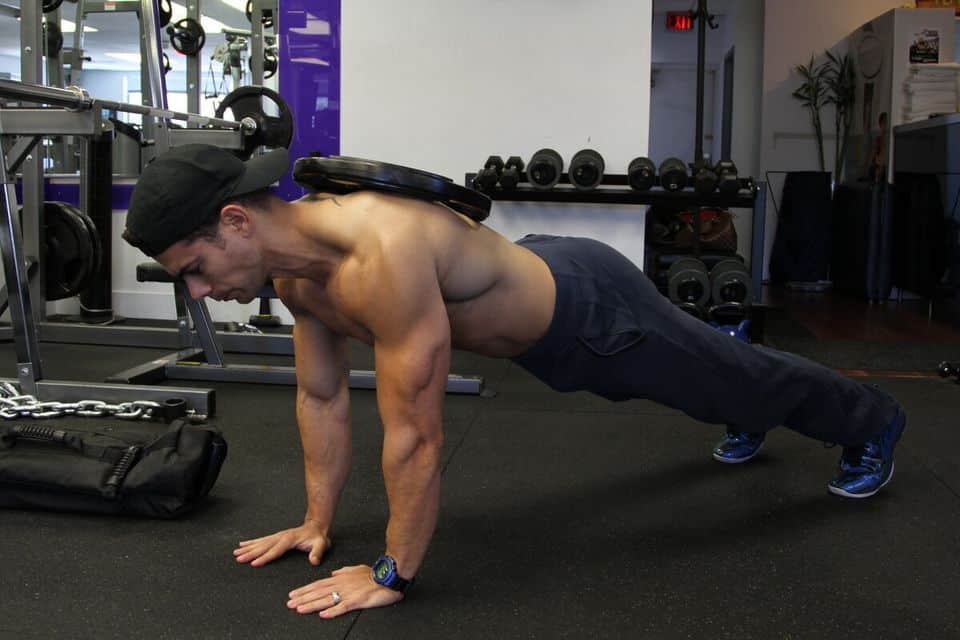Introduction
How Many Pushups A Day To See Results: Pushups are a classic and versatile exercise that can significantly impact your overall fitness. Whether you’re aiming to build strength, sculpt your upper body, or even lose weight, the number of pushups you do daily can make a substantial difference in the results you achieve. The key factors that determine how many pushups you should aim for each day to see noticeable improvements. From beginners seeking to develop foundational strength to fitness enthusiasts pushing their limits, the right daily pushup target can help you meet your goals effectively.
Fitness objectives are crucial when determining how many pushups to do daily. Some may seek to enhance muscle definition and endurance, while others focus on building raw strength. Your fitness level also plays a crucial role; what’s suitable for a seasoned athlete may not be ideal for someone just starting. With the right approach and a tailored plan, you can ensure that daily pushups become a productive part of your fitness routine, yielding visible results over time.
In the various pushup strategies, including progressive overload, proper form, and the balance between quality and quantity, to help you find the right daily pushup goal that aligns with your fitness aspirations. Whether you’re a beginner or a seasoned fitness enthusiast, this guide will provide the insights you need to make your daily pushup routine a potent catalyst for change in your body and fitness journey.

How many pushups should I do a day to see results fast?
To find out how many push-ups you need to do a day to build muscle, take your max reps for one set and use that to calculate a push-up goal for your upper-body days: If you can do fewer than 25 push-ups in a row, shoot for 50 to 75 push-ups. If your max is between 25 and 50 push-ups, shoot for 75 to 150 push-ups.
Beginners: If you’re new to pushups, start with a manageable number and gradually work your way up. Aim for 10-15 pushups per day and gradually increase that number as you become more comfortable with the exercise. Ensure you use proper form to prevent injury.
Intermediate: For those with some experience, consider doing 30-50 pushups per day. You can break this into sets with short rest periods to challenge your muscles and build both strength and endurance.
Advanced: If you have a higher fitness level and specific goals, such as building significant upper body strength, you may need to do more than 50 pushups a day. You might want to consider different variations of pushups to target various muscle groups effectively.
Is 100 pushups a day enough to see results?
100 push-ups a day isn’t too much, especially when you break it up into sets. However, if you can’t do 100 push-ups a day yet, training will help you get stronger. But if you’re already able to do 100 push-ups, even completing them in a few sets, it won’t bring much benefit.
Increased Strength and Endurance: Regularly performing 100 pushups a day can certainly increase your upper body strength and endurance. Your chest, shoulders, triceps, and core muscles will get a good workout, and you’ll likely notice improvements in these areas.
Muscle Definition: If your goal is to achieve muscle definition in your chest and arms, consistently doing 100 pushups a day can help. However, muscle definition also depends on your body fat percentage, so a balanced diet and overall fat loss may be necessary for more pronounced results.
Improved Pushup Technique: Practicing pushups regularly can help you perfect your form and technique. Proper form is crucial for preventing injuries and maximizing the benefits of the exercise.
Cardiovascular Benefits: While pushups primarily target strength and muscle endurance, doing 100 pushups in a row can also provide a cardiovascular workout, increasing your heart rate and potentially improving your overall fitness.
What happens after 30 pushups a day?
Doing daily pushups can help build muscle tone and strength in the upper body. Other potential benefits include improved cardiovascular health and better support around the shoulder joints. However, practicing pushups every day does come with some risks. These include lower back pain, wrist pain, and elbow injury.
Increased Upper Body Strength: Regularly doing 30 pushups will lead to increased strength in your chest, shoulders, and triceps. You’ll likely notice that your ability to perform pushups improves, and your muscles become more defined over time.
Improved Muscle Endurance: Pushups also help improve muscle endurance. Over time, you may find it easier to sustain the effort during physical activities that engage the upper body.
Toned Muscles: While 30 pushups alone may not lead to significant muscle growth, they can help tone and define your chest and arms, especially if combined with a balanced diet and other forms of exercise.
Enhanced Core Activation: Pushups engage your core muscles to stabilize your body. Consistent pushup practice can lead to improved core strength and stability.
Better Pushup Form: Regular practice can help you perfect your pushup form, ensuring you use proper technique and reduce the risk of injury.
Increased Confidence: Achieving a consistent pushup routine can boost your confidence in your physical abilities and overall fitness.
Is 40 pushups nonstop good?
If you can do 40 or more — which is really hard — great! If you can do only 15 or 20, not so great. But then again, researchers found that every pushup you can do over the baseline of 10 decreases the risk of heart disease. If you can only do 10 or fewer, you need to get to work.
Strength and Endurance: Doing 40 pushups nonstop demonstrates strong upper body strength and muscle endurance. This level of strength can be useful in various sports and physical activities.
Fitness Level: 40 nonstop pushups can be considered excellent for the average person in terms of fitness. It’s often considered a benchmark for upper body fitness and a sign of good overall physical health.
Progression: If you’ve worked your way up to 40 nonstop pushups, it’s a sign of progress and commitment to your fitness routine. It’s a clear indication that your training has been effective.
Personal Goals: Your perception of whether it’s “good” may also depend on your personal goals. For some, reaching 40 pushups may be their ultimate goal, while others may aspire to achieve more or focus on other aspects of fitness.
Variety of Exercises: While achieving 40 pushups is commendable, it’s important to remember that a well-rounded fitness routine includes various exercises to target different muscle groups and provide a comprehensive workout.
Which pushup is best for chest?
Wide-grip pushups are a great way to target your chest muscles. The exercise is performed the same way as a regular pushup, but with your hands wide apart. This forces your chest muscles to work harder than they would when performing standard pushups: Get into a plank position with your abs tight and glutes clenched.
Standard Pushup: The classic pushup is a great choice for targeting the chest. Make sure your hands are shoulder-width apart and your body is in a straight line from head to heels. This exercise primarily works the middle and lower parts of your chest.
Wide-Grip Pushup: In this variation, your hands are placed wider apart than in a standard pushup. This places more emphasis on the outer chest muscles.
Diamond (Close-Grip) Pushup: In a diamond pushup, your hands are close together directly under your chest. This variation engages the inner chest and triceps.
Incline Pushup: Elevating your hands on a surface, such as a bench or step, creates an incline. This variation targets the upper part of the chest.
Decline Pushup: Elevating your feet on a surface and performing pushups with your hands on the floor targets the lower part of the chest.
One-Arm Pushup: The one-arm pushup is an advanced variation that significantly challenges your chest muscles. It also engages the core and stabilizer muscles.
Plyometric (Clap) Pushup: Plyometric pushups involve explosive movements that require a burst of energy. They not only build chest strength but also improve power and speed.
Do pushups reduce belly?
Because push-ups mainly focus on the muscles of the upper body, they have relatively little direct impact on the abdominal area. Push-ups help reduce belly fat if and only if the calories burned during exercise are enough to convert fat loss and increase abdominal muscle.
Cardiovascular Exercise: Incorporate aerobic activities like running, cycling, swimming, or brisk walking into your routine to increase calorie expenditure and promote fat loss throughout your body.
Strength Training: Building muscle through exercises like pushups, squats, and weightlifting can boost your metabolism, making it easier to maintain a calorie deficit.
Diet: Focus on a well-balanced diet that includes lean proteins, whole grains, fruits, vegetables, and healthy fats. Reducing calorie intake and eating nutrient-dense foods is essential for losing belly fat.
Portion Control: Be mindful of portion sizes and avoid overeating. Eating in moderation can help control calorie intake.
Hydration: Staying well-hydrated can support your metabolism and overall health.
Stress Management: High stress levels can lead to weight gain and fat storage in the abdominal area. Practice stress-reduction techniques like meditation, yoga, or deep breathing exercises.
Consistency: Consistency in exercise and diet is key to achieving and maintaining fat loss.
How many pushups is best?
But for an average person, even 50 to 100 push-ups should be enough to maintain a good upper body, provided it is done properly.
Strength and Endurance: If your goal is to build strength and endurance, doing multiple sets of pushups to near failure (i.e., until you can’t do another proper pushup with good form) is effective. This could range from 3 sets of 10-20 reps to 5 sets of 15-30 reps or more, depending on your fitness level.
Muscle Definition and Toning: To achieve muscle definition and tone, you can aim for a moderate number of pushups in each set (e.g., 3 sets of 10-15 reps). You may want to combine pushups with other exercises that target different muscle groups.
General Fitness: For general fitness and overall health, doing 20-30 pushups in a set and repeating this for 2-3 sets can be a good goal to strive for.
Advanced Goals: If you’re more advanced and aiming for a challenge, you can work on increasing the number of pushups you can perform in a single set. Some people aim to reach 50, 100, or even more pushups in one set.
Progression: Keep in mind that setting and achieving personal goals for pushups is a good approach. Regularly challenging yourself and gradually increasing the number of pushups can help you see continued progress.
How many pushups is most effective?
If you’re new to fitness or push-ups specifically, she recommends starting with five to 10 reps per workout and increasing from there. If that feels doable, Stonehouse suggests doing two or three sets of 10 push-ups with a short rest between each set.
The most effective number of pushups varies greatly depending on your fitness goals and your current fitness level. There is no universal “magic number” that applies to everyone. The effectiveness of your pushup routine is determined by how well it aligns with your individual objectives.
For building strength and endurance, multiple sets of pushups, each taken to near failure, can be effective. This can involve doing 3-5 sets of pushups with 10-30 reps in each set. To develop muscle definition and tone, moderate rep ranges with proper form are crucial.
Aim for 3 sets of 10-15 reps in each set. If your goal is general fitness, performing 20-30 pushups in a set and repeating this for 2-3 sets can be a good starting point. For advanced fitness enthusiasts, increasing the number of pushups in a single set can be a challenging and effective goal. Some individuals aim for 50, 100, or more pushups in a single set as a measure of their upper body strength and endurance.
Consistency and gradual progression are key to achieving your pushup goals. Always prioritize proper form to prevent injury and get the most out of your pushup routine. Ultimately, the most effective number of pushups is the one that aligns with your unique fitness objectives and allows for steady progress. It’s important to tailor your approach to your personal needs and continue challenging yourself as you become stronger and more proficient.

Conclusion
The number of pushups you should do each day to see results depends on various factors, including your fitness level, goals, and overall exercise routine. If you’re new to pushups, it’s essential to start gradually and work your way up to avoid injury. Most beginners should aim to complete 10-15 pushups per day and gradually increase that number as they become more comfortable with the exercise. As you progress, you can strive to do multiple sets with short breaks in between to challenge your muscles further.
Intermediate and advanced individuals may need to do more pushups to see noticeable results. To build strength and endurance, consider incorporating 30-50 pushups into your daily routine. Keep in mind that consistency is key, and it’s not just about the number but also about maintaining proper form and varying your pushup styles for a well-rounded upper body workout.
It’s vital to customize your pushup routine to align with your fitness objectives, whether that’s building muscle, increasing endurance, or simply improving your overall health. Pushups are just one part of a comprehensive exercise program, and a well-balanced diet plays a crucial role in achieving your desired results. Consult with a fitness professional or personal trainer to create a tailored workout plan that suits your specific needs and goals.


1 comment
Thanks for sharing. I read many of your blog posts, cool, your blog is very good.